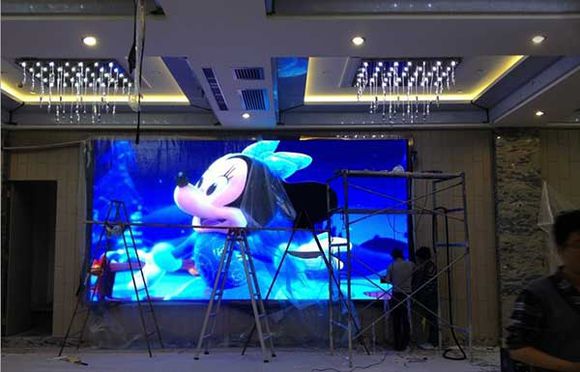Based on different user needs and installation environments, Huaxintong Optoelectronic LED display manufacturers recommend customers to choose synchronous control systems or asynchronous control systems when providing solutions. So, what are the principles and differences between LED electronic large screens and asynchronous control systems? What are the functional characteristics of both?

Principles and differences of synchronous and asynchronous control systems for LED electronic large screens
The so-called LED display synchronization control system means that the content of the LED display screen and the computer display screen are completely synchronized, that is, what content is played on the computer will be played on the LED display screen. Therefore, a computer is usually installed near the installation of LED electronic screens or in the center of the computer room. The computer is connected to the LED display screen through a network cable to achieve synchronous display.
LED display asynchronous control system, the content displayed on the LED display is not synchronized with the computer content in real time. Before playing content on the LED display screen, it is necessary to set the required video, image, and text information in the software on the computer, including playback order, special effects, and content. Then, copy it to a USB drive and play it back into the LED display screen in order. Therefore, there is no need to install a computer near the LED display screen.
The characteristics of synchronous control systems are real-time performance, complex operation, complete synchronization with the content of computer displays, and rich expressiveness. Therefore, it can display real-time local or network videos, images, and text information, mainly used for indoor or outdoor full-color LED displays. The working mode of the LED display synchronization control system is equivalent to that of a computer monitor, with an update rate of 60 frames per second and the ability to achieve point-to-point display. It has the characteristics of multi gray color display and can achieve multimedia advertising effects.
But this display has a drawback, that is, if the computer is turned off, the LED display screen will not display any content, so the playback time will be limited to a certain extent. Of course, if the computer works 24 hours a day, the screen will also work 24 hours without any malfunctions.
Asynchronous control systems, also known as LED electronic large screen offline control systems or offline cards, typically have limited storage space and are commonly used for displaying text, symbols, graphics, or animations. The displayed content is pre-set by computer software and pre transferred to the frame memory of the LED screen through RS232/485 serial port, and then displayed and played screen by screen in a loop. Due to limited storage space, playing content is also restricted and cannot be changed at any time. If you need to change the content, you need to reset it in the computer software, insert it into the memory, and then play it on the LED display screen.
Its characteristics are simple operation, wide range of use, and the ability to control the display screen content in different areas. Even if the computer is turned off, the LED display screen can still display content normally, but the amount of information played will be limited, so it is not suitable for places with high real-time requirements.
The synchronous control system, combined with the computer system, has better performance and is suitable for fixed installation and places with high display requirements. It supports video live streaming and real-time synchronization of network videos, with a large load range and suitable for large and medium-sized LED displays. Asynchronous control systems integrate multiple functions such as program reception, storage, and compilation, making their applications more flexible. But with a small carrying range and limited storage space, it is generally suitable for scenarios that do not require long-term replacement of playback content.
The synchronous control system is mainly applied in fields such as stage rental, concerts, live broadcasts, evening parties, schools, stations, shopping malls, banks, and hospitals, and is suitable for places with rich visual expression and high real-time performance. Asynchronous control systems are suitable for applications such as regional advertising, targeted task distribution, traffic guidance screens, LED advertising machines, and LED pole screens.
The above is an introduction by Huaxintong Optoelectronics LED display manufacturer about the principles and differences of synchronous and asynchronous control systems for LED electronic large screens. The synchronous control system displays content synchronously with the computer, with high real-time performance and high load capacity. Asynchronous systems, on the other hand, are controlled offline and can be deployed in different regions, assigned tasks, and have simple operations. However, regardless of the type of control system, the appropriate system should be selected based on customer needs and usage scenarios.